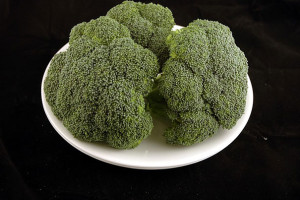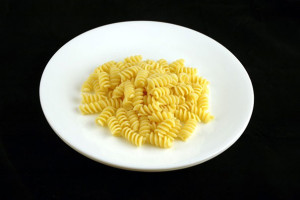The Prevention and the Treatment of diseases with Healthy Nutrition is one of the most important goals in providing good healthcare to our patients.
We are challenged by many Environmental and Lifestyle forces, including marketing and the easy availability of many processed foods, that today play a very important role, as we make our daily living and eating choices.
Healthy Nutrition is recognized, by many individuals, as the most significant factor to help reduce morbidity and mortality, and to prolong longevity, for our patients, as we promote the prevention of disease.
The questions we need to ask today are
(1) What Is Healthy Nutrition?
(2) How can we make better Food choices?
(3) With which Nutrition tool can one recognize Healthy Nutrition?
Currently the Calorie Unit of the Macronutrients (Carbohydrate, Fats/Oils, Proteins) is the basic Nutrition tool most often used.
Since the 1940s, Western society has been taught to identify Foods in terms of the quantity of Calorie Units or Energy. The Calorie unit is not a measure of Healthy Nutrition. It is a measure of Energy. The use of the Calorie unit is confusing and too often provides us with misinformation. As a result, this artificial tool of Calories and Calorie units have, for the past 80 years, failed to provide a clear understanding of the quality of the Foods, the invisible or hidden ingredients either found or not present within Foodstuff.
Processed and unprocessed foods too often look alike when identified by the Calorie Units. But they are different.
Despite the ever present Calorie Unit being used by our Nutrition specialists, we are facing a major and growing epidemic of health care crises and disease states. In fact, today in the 21st century, in the USA there is a rapidly growing population of individuals with Obesity, Constipation, Heart Disease, Cancer, Bowel Disorders and Diabetes.
We ask Why?
Modern Health Care professionals today recognize that diet can and does influence the prevention and plays a major role in the treatment of many illnesses.
We recognize that there is a need for a new or better Nutrition tool to help the consumer recognize and make better daily choices from the available Foods on our daily Menu. This tool should help consumers see the light and to understand how to make better choices for a diet that provides more Healthy Nutrition and provides for better health and better outcomes.
FIBER DENSITY
It was over 30 years ago that Dr Moskowitz first introduced the concept of Fiber Nutrient Density for Carbohydrates. Carbohydrate Foodstuff is now identified on the basis of their Fiber Density, choosing High Fiber over Low-Fiber.
As our understanding of Nutrition and the relationship between Health and Disease has grown, over the past ten years, Dr. George Moskowitz has evolved his original concept to include additional new Nutrition/ Nutrient tools to help facilitate this process for each patient, to be discussed elsewhere.
In addition to Fiber Nutrient Density, patients learn how to optimize the daily use of other Micronutrients, including Water and the Gut Flora or Microbes, in maximizing both their General Physical and Mental health, as well as with improving their specific digestive health.
DIET TIPS
The Empty Calories and Excess Energy, found in the low Fiber Carbohydrates in the common American diet, leads directly to excess body fat. This is a medical fact.
By simply reviewing the average American diet we learn that the major source of our Daily Nutrition is the presence of low Fiber, High Caloric Density, Carbohydrate Foods.
Today, almost 60% of the American daily diet is from eating these low Fiber, High Caloric Density Carbohydrates, most often described as processed Foods.
From childhood to adulthood we gradually have become addicted to these Carbohydrate Junk Foods. They are full of Empty Calories which simply spikes your blood sugar levels. The resulting extra sugar that floats in your body are then stored as extra empty calories, to be converted, as storage, into body fat.
Soon after eating a low Fiber High Caloric Density Carbohydrate, usually a processed Food, such as a slice of white bread, the body’s blood sugar level quickly spikes or rises. This immediate sugar rush causes a higher dose of insulin to be released from the pancreas, reducing your blood sugar level, and soon after, leaving one with a hunger pain.
This often becomes a vicious cycle; you increase your intake of these empty calories, by eating the processed low Fiber Carbohydrates, because they are easily available and usually less expensive, but then shortly after eating them, you feel hungry again, and you continue to eat more of the same.
Choosing these low-Fiber Carbs will not make you satiated or feel full ; more often you will crave and seek more Foods to eat. These Junk and often processed Foods are the crucial and critical factor in the high prevalence and incidence of many of our modern disease, including the epidemic of Diabetes.
Natural unprocessed Carbohydrate Foodstuff, like raw or steamed vegetables, is at the opposite end of the Empty Calories listed on the Food chain. They are the High Fiber, with the additional bonus of being low Calorie Density Foodstuff.
Comparing Calories, Nutrient Density
To get a better idea of how to recognize and compare the two Carbohydrate Foodstuff, please see the example shown below:
One Food shown is a Low Fiber (High Calorie Density Carbohydrate) Food – PASTA. This is being compared to another Foodstuff – a High Fiber (Low Calorie Density Carbohydrate).Foodstuff . – BROCCOLI.
Let us look at the following descriptions:
Each of the two Carbohydrates below are measured in terms of a uniform serving weight of 100 Grams.
| 100 grams | Calories | Carbs | Fiber | ||
| Broccoli | 34 | 7 gr | 3 gr | ||
| Pasta | 131 | 25 gr | 0 gr |
As we examine and compare the Calories in a fixed weight of Carbohydrate Foods we become aware of the Calorie Density of the Food. This is an Energy value, and not a Nutrient value.
100 Grams of the Carbohydrate Broccoli has 34 Calories.
100 Grams of the Carbohydrate PASTA has 131 calories.
The fact that 200 Calories is found in less than 200 grams of the Carbohydrate Pasta while an equal 200 Calories is found in 600 grams of the Carbohydrate Broccoli is often confusing to the average Consumer.
Questions
Which of these two Carbohydrates might fill you up quicker?
Which Carbohydrate has an excess of Empty Calories or higher Calorie Density?
Explain, Why?
| Broccoli – 200 Calories
 Vitamin A 25% Weight 600 grams
|
Cooked Pasta – 200 Calories
 Vitamin A 0% Weight approx. 200 grams |
Animal products listed below are all 0 Fiber.
NUTRIENT DENSITY OF COMMON ANIMAL BASED FOODS, PER 100 GRAMS
| Food | Calorie | Total Fat | Saturated Fat | Protein |
|---|---|---|---|---|
| Beef – 90% Lean Ground | 214 | 11 | 4 | 27 |
| Chicken Breast – Skinless | 165 | 4 | 1 | 31 |
| Egg – Whole | 143 | 10 | 3 | 13 |
| Salmon – Chinook | 179 | 10 | 3 | 20 |
NUTRIENT DENSITY OF CARBOHYDRATES IN FOODSTUFFS, PER 100 GRAMS
| Food | Calorie | Carb | Fiber Density |
|---|---|---|---|
| Avocado | 160 | 9 | 7 |
| Pecans | 691 | 14 | 10 |
| Sesame Seeds | 573 | 23 | 12 |
| Collards | 30 | 6 | 4 |
| Celery | 16 | 3 | 2 |
| Radish | 16 | 3 | 2 |
| Banana Peppers | 27 | 5 | 3 |
| Mustard Greens | 26 | 5 | 3 |
| Cauliflower | 25 | 5 | 3 |
| Hazelnuts | 628 | 17 | 10 |
| Almonds | 575 | 22 | 12 |
| Walnuts | 654 | 14 | 7 |
| Raspberries | 52 | 12 | 6 |
| Blackberries | 43 | 10 | 5 |
| Serrano Pepper | 32 | 8 | 4 |
| Cabbage | 25 | 6 | 3 |
| Spinach | 23 | 4 | 2 |
| Asparagus | 20 | 4 | 2 |
| Swiss Chard | 19 | 4 | 2 |
| Artichokes | 47 | 11 | 5 |
| Sunflower Seeds | 584 | 20 | 9 |
| Mushrooms – Maitake | 37 | 7 | 3 |
| Broccoli | 34 | 7 | 3 |
| Green Beans | 31 | 7 | 3 |
| Okra | 31 | 7 | 3 |
| Cranberry Beans | 335 | 60 | 25 |
| Cranberries | 46 | 12 | 5 |
| Rhubarb | 21 | 5 | 2 |
| Sweet Green Pepper | 20 | 5 | 2 |
| Beans – Navy | 337 | 61 | 24 |
| Kumquats | 71 | 16 | 6 |
| Sugar Snap Peas | 42 | 8 | 3 |
| Rutabagas | 36 | 8 | 3 |
| Peas | 81 | 14 | 5 |
| Guava | 68 | 14 | 5 |
| Sweet Red Peppers | 31 | 6 | 2 |
| Lemons | 29 | 9 | 3 |
| Turnips | 28 | 6 | 2 |
| Summer Squash | 16 | 3 | 1 |
| Lettuce | 15 | 3 | 1 |
| Soybeans | 446 | 30 | 9 |
| Beets | 43 | 10 | 3 |
| Carrots | 41 | 10 | 3 |
| Parsnips | 75 | 18 | 5 |
| Limes | 30 | 11 | 3 |
| Strawberries | 32 | 8 | 2 |
| Tomatoes | 18 | 4 | 1 |
| Beans – Kidney | 337 | 61 | 15 |
| Black Beans | 341 | 62 | 15 |
| Beans – Pinto | 347 | 63 | 15 |
| Pumpkin Seeds | 541 | 18 | 4 |
| Celeriac | 42 | 9 | 2 |
| Onion | 40 | 9 | 2 |
| Pomegranates | 83 | 19 | 4 |
| Pears | 58 | 15 | 3 |
| Kale | 50 | 10 | 2 |
| Papaya | 39 | 10 | 2 |
| Apricots | 48 | 11 | 2 |
| Grapefruit | 42 | 11 | 2 |
| Oranges | 47 | 12 | 2 |
| Sweet Yellow Peppers | 27 | 6 | 1 |
| Eggplant | 24 | 6 | 1 |
| Corn | 86 | 19 | 3 |
| Figs | 74 | 19 | 3 |
| Tangerines | 53 | 13 | 2 |
| Sweet Potato | 86 | 20 | 3 |
| Yams | 118 | 28 | 4 |
| Leeks | 61 | 14 | 2 |
| Blueberries | 57 | 14 | 2 |
| Apples | 52 | 14 | 2 |
| Bananas | 89 | 23 | 3 |
| Potatoes – Red | 70 | 16 | 2 |
| Cherries | 63 | 16 | 2 |
| Honeydew | 36 | 9 | 1 |
| Cantaloupe | 34 | 9 | 1 |
| Quinoa | 368 | 64 | 7 |
| Acorn Squash | 40 | 10 | 1 |
| Peaches | 39 | 10 | 1 |
| Pineapple | 50 | 13 | 1 |
| Grapes | 67 | 17 | 1 |
| Potatoes – Russet | 79 | 18 | 1 |
| Watermelon | 30 | 8 | 1 |
| Cucumbers | 15 | 4 | 1 |